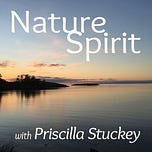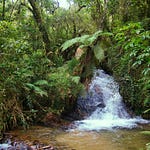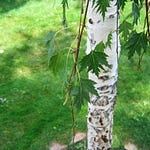A long-ago hike in Pinnacles National Park and arriving at its panoramic view at the top offers clues about what it's like to open the heart. But in a society that teaches us to follow the mind—thinking and planning and goal setting—what does it look like to follow the heart? Unangan teacher Ilarion Merculieff's experience of discovering and practicing "awareness without thinking" offers one example. How opening the heart is not about opening to feelings per se but rather about navigating in life by following a larger wisdom that arises when we listen from the heart.
Transcript
Many years ago, when I lived in California, I went camping one weekend in Pinnacles National Park. The park was only a national monument then, and hardly anyone was there.
Pinnacles has some spectacular hikes, and one of them leads to the very tops of those tall rocky spires. I remember climbing up and up until we reached what felt like the backbone of a great earth giant. And there the trail led across the tips of those pinnacles, as if we were scrambling from one giant vertebra to the next. I remember feeling suspended in the air, in the middle of a bright blue sky. The ground lay down below, far away. The view went on for miles.
We paused now and then to gaze out at the view, and to marvel at it. I remember that feeling of spaciousness, that feeling of ahhhhhh! I think about that feeling when I think about what it’s like to open the heart.
The way of the open heart is not the preferred way in our society; our culture teaches us to follow the mind instead. The way of the mind is the path of thoughts and words—and planning and proposals and systematizing and strategizing and evaluating. We think our way through problems, we think our way through opportunities, we even think our way through our personal lives—setting goals, making resolutions, writing up the steps needed to reach our goals. These skills of planning and step-by-step progress are great to have, because they help us get stuff done. They are things the human mind is extremely good at, and they are the all-star methods in this society. Do a web search for “three easy steps,” and you will get more than a billion results.
But planning and goal setting and strategizing have some downsides too. For one thing, they all come from the mind. And when the mind is our only tool, we tend to stay on a treadmill of activity; the hallmark of the mental approach is to remain in motion. I suspect this is one reason why a pandemic has been so hard for Americans to adapt to. Stopping that forward press is just too hard. It makes people so uncomfortable that they will fight to keep moving. And right now, many are fighting so hard—and in spite of the explosion of cases of the virus—that it suggests something deeper going on. Something more like a compulsion. Feeling compelled to stay in motion.
Because that’s what the mind does. It compels us to keep moving. It wants us to run away, always, from feeling vulnerable and to run toward some version of success.
And there’s another downside of following the mind. It has a vision problem. The mind is nearsighted. It can’t see past the individual good, out toward the greater good. Which means it can’t even see our own individual good very clearly either, because a nearsighted view is a distorted one. The mental approach, by itself, leads people to think in zero-sum terms, to make decisions that serve themselves at the expense of others, because all the mind can see is the close-up view, not the panoramic one.
And that’s why leaving the way of the mind and coming into the wide-open place of the heart is so important, and so healing.
When we come into the heart, it’s like reaching the tops of those pinnacles. Suddenly the view opens out, and so do we. The mind slows down. The tangle of thoughts recedes. Our breathing slows, becoming more relaxed. We feel more peaceful, more receptive. We’re not pressing toward the goal now, just taking in the view. A sense of wonder grows. And awe. We may feel humbled, connected again to all that is. And we savor that feeling, which is love.
It’s not just reaching the top of a mountain or a hill that has that heart-opening effect. Spending any time in nature does it as well. And when we reach that more spacious place inside, we might feel relief, for anytime we open the heart, things start to look a little simpler. The ten thousand things of everyday life do not press on us quite so hard. We can act with a little more compassion, a little more relaxed kindness.
Every authentic spiritual path helps people remember, like this, how to open the heart. How to let go of the mind’s grasping and come into that more spacious place, where we are connected to others. And how to follow the heart—how to make decisions from that place of feeling connected instead of always reaching for our own advantage.
Some very clear descriptions of the way of the heart are coming these days from Indigenous teachers. I think of Ilarion Merculieff, of the Unangan people of Alaska, from the Pribilof Islands of the Bering Sea. (The Western name for the Unangan people is Aleut.)
Ilarion talks about “dropping out of the head and into the heart,” and that is my experience of it too. The physical sensation is one of leaving that frantic, forward-reaching feeling up in the head and instead relaxing fully into the body. It can happen as gently as a leaf floating toward the ground. The awareness settles gradually downward, down into the heart, where it can relax and open.
Ilarion also talks about “awareness without words,” and how he learned this skill very young. Even as a small child, he would walk to the shore of his island and watch all the different kinds of birds. When he was six, he writes, “I noticed how thousands of birds darted diagonally, up and down, left to right and right to left, flying at different speeds and in different directions simultaneously without ever even clipping another’s wing. In my six-year-old mind, I decided that the only difference between those birds and myself was that they drew upon a vast field of awareness rather than an intellectual thought process (although I did not use such words at the time).”
He says he wanted to be like those birds, so he sat there and practiced. “After months of effort,” he says, “I developed the capacity to maintain this state of ‘awareness without thinking’ for several hours at a time.” And that, he says, made all the difference. “That was when the magic happened,” he writes. “I could sense many things I’d never experienced before, and my world expanded enormously.”
This is what coming into the heart does. It allows us to become aware of a vast field of life, and to enjoy that panoramic view. In that wide-open awareness, the heart blooms. And priorities shift. We learn to pay attention to different cues.
So following the heart is about how we make moment-to-moment choices in life. People might think that it means following feelings rather than thoughts, but this would be a misunderstanding. Feelings or emotions, especially strong ones, arise in the mind, not the heart, and I’ll say more about this later. For now, I just want to say that opening the heart is not about opening to feelings, in and of themselves. It is not about developing empathy, per se, and it is not about making decisions by the gut.
Coming into the heart is about something way more spacious, and more magical. To follow the way of the heart is to live by listening. To open oneself, over and over, to a wisdom that is so much larger than the human mind can fathom. And to place one’s mind in the service of that greater wisdom. So the human mind’s exceptional skills of thinking and planning and putting words together can be used, not to accomplish or acquire or achieve, but to serve something much larger and more wonderful. To serve freedom. And becoming. To serve love and the unfolding of life.
So I wish you the magic of an open heart and the courage to hear, over and over again, the greater wisdom. And I wish you bravery to follow the wisdom that arises when you listen from the heart.
For digging deeper
I first got to know Ilarion Merculieff’s work at the website of the Center for Humans and Nature, “Out of the Head, Into the Heart: The Way of the Human Being” (2017). His talk at Bioneers 2014 is available on YouTube. An essay from his 2018 book, Perspectives on Indigenous Issues, appears on the Bioneers website.
Many spiritual traditions call attention to the limitations of the human mind. In Christianity, the Gospel of John (1:5) speaks of a “light [that] shines in the darkness, and the darkness did not comprehend it” (NASV). The Greek word translated “comprehend” equally means “overcome,” and many versions translate it this way instead. I’ve been fascinated, since my Koiné Greek–learning days in seminary forty years ago, by this one word expressing the idea that the mind, just by comprehending, can also extinguish.
Several hundred years older than the Gospels is the Tao Te Ching, with its opening verse:
The Tao that can be told is not the eternal Tao. The name that can be named is not the eternal name. The nameless is the beginning of heaven and earth. The named is the mother of ten thousand things. . . . trans. Gia-Fu Feng and Jane English (Vintage Books, 1997)
The thirteenth-century poet and scholar Rumi said in Ghazal 1472:
My intellect kept me thinking for forty years. When I turned sixty-two, I freed myself from all such thoughts. (version by Brad Gooch on Twitter)
Coleman Barks’s version is similar:
For forty years I made plans and worried about them. Now sixty-two, I’ve escaped reasonableness.
Moving beyond linear reason and coming into the present moment is, of course, the heart of Zen practice and much mindfulness practice as well.
In yoga I first encountered the practice of diffuse (rather than pointed) awareness, similar to what Ilarion describes, and I experimented a bit with it—being aware of everything around you in a diffuse way instead of focusing on one thing at at time. But it was during the early months of training with my Spirit Helper, Bear, that he led me back to that practice of wide-open awareness and placed it in connection with the flows of all living beings, and I wrote about one experience of this in Tamed by a Bear; see chap. 28.












